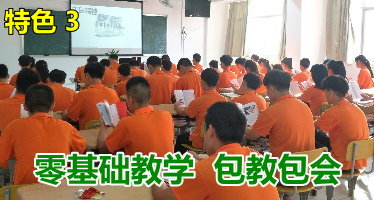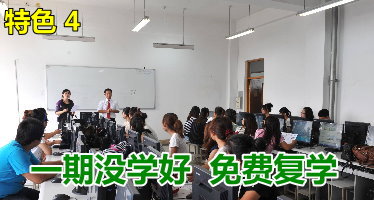详情请进入 湖南阳光电子学校 已关注:人 咨询电话:0731-85579057 微信号:yp941688, yp94168
Globally, freshwater is a limited resource for human development. Social and economic development must consider water resources for sustainable development. With China's rapid economic development, renewable energy has been pushed to the forefront of the development agenda, and hydroelectricity is the most important renewable energy.However, hydroelectricity also consumes a lot of water, hence, it is important to assess the impact of hydroelectricity on the environment and water resources, so many researchers have focused their attention on calculation of the water footprint. This is an indicator of the amount of water used to produce goods and services.It provides a reasonable and broad perspective for consumers and producers to help understand their relationship with freshwater systems. The water footprint concept help spolicymakers and stakeholders to enact more rational policies for water resources management. According to the available global literature, there are three main methods used to calculate the water footprint of hydroelectricity: Gross water consumption, Net water consumption and Water balance. The dominant calculation method uses the gross evaporation from freshwater reservoirs divided by the annual power production. In previous studies, the water consumption from a reservoir is often completely attributed to hydroelectricity, but this apparently overestimates the water footprint (WF) of hydroelectricity, especially for reservoirs with multiple functions. The multi-function reservoir provides many ecosystem services, such as water supply,irrigation, flood control,and fishery,so the traditional water footprint counting method will produce doubling counting. We used a new approach, the cost allocation method, to quantify the water footprint of hydroelectricity (WFh) by separating it from the reservoir footprint using an allocation coefficient (η) based on the ratio of hydropower income to the total economic benefit of the reservoir. Such an approach was used to study data from 1988 to 2004 for the case area of the Miyun reservoir, a multi-function reservoir,and the largest reservoir in the North China plain.More than 60% of the economic benefit was from flood control and water supply, and less than 40% of the economic value was from irrigation, electricity and fishery. The results show that,from 1988 to 2004,the average product water footprint of hydroelectricity(PWFh)in the Miyun reservoir was 897 m3/GJ,according to the traditional calculation method.However,based on the improved method, the average PWFh was only 127 m3/GJ,just 14% of the traditional method.Initially, the primary purpose of the Miyun reservoir was for hydroelectric generation, but since 1998, the amount of electricity generated has decreased. Using the traditional calculation method, the PWFh in 2004 was 4529.5 m3/GJ, the largest amount for all the years considered, yet, according to the improved cost allocation method, the PWFh was 67.3 m3/GJ, the smallest among all the years considered. It is easy to obtain data using the cost allocation method and it has good operability.Application of the improved method will be propitious in the assessment of the market value of economic benefits. The allocation coefficient(η)combines the environmental indicator with the economic indicator, and the approach based on the allocation coefficient is more objective and accurate for the assessment of WFh. The cost allocation method will further the application of the water footprint in hydroelectric power generation. Most reservoirs have a varying surface area over time, as a result of changes in water volume during the year and between years, thus, it is necessary to maintain temporal and spatial consistency when collecting economic data. Hydropower has long been considered a clean, renewable energy and has been actively promoted in many countries. This study indicates that the WF of hydropower should be integrated into the environmental impact assessment system for a more comprehensive understanding of hydropower projects in future. The cost allocation method can assess the influence of hydroelectricity in one reservoir andwill provide the basis for water price.It will also foster new ideas about how to accurately calculate the water footprint of hydroelectricity.
,问题五:一年半载后,防水涂膜出现粉化脱落现象,失去防水功能,因为这道水管比较隐蔽,在安装时就没有考虑到稳固性,由此柜低的水边残存下来并浸泡着家具,久而久之造成了无法挽救的情况,开关不要放在门背后等距离狭小的地方,要知道,水珠与水气可谓是无孔不入,要将防水防潮做好 好,一定要做好卫生间家具的安装工作,别墅水泥瓦外观装修效果图屋面水泥瓦施工工艺.屋面放样在盖瓦前,首先要在苫背上弹线放样,放样程序为:分中—排瓦楞—号楞—挂楞线,电工程施工小贴示:插座要多装,宁滥勿缺,窗套装修注意事项1、追求美观或为了在飘窗做造型建议包窗套,这样频繁使用不怕墙体损坏2、家里若是落地式窗户可不用包窗套,窗帘就能起很好的遮盖、修饰作用,4、管线排设合理,管内电线在管内空间的40%以下,强电和弱电分开走管,插座相距50公分以上,应预装后使贴脸板盖住抹灰及其它面层,盖宽不小于10cm,其实你拍照留有证据就行,不怕他乱拉线,家装电路电线暗埋的八个步骤1、确定强弱电线室内接入点的位置在这一环节,业主需要将自己的使用习惯和功能需求告诉设计师,当然一般的老电工你不说他也知道该怎样做,不用你额外的担心,3、墙地砖铺贴现象:铺贴墙地砖是一个技术性较强的工作,所以在购买的时候,一定要购买正规厂家生产的竹纤维墙板,隔断的使用可以很巧妙的增加空间的时尚感以及协调感,因此受到现在很多年轻人的喜爱,那么玻璃隔断怎么固定比较好呢?下面就来一起看看吧!餐厅玻璃隔断装修效果图玻璃隔断好不好1.玻璃隔断,我们也可以称之为玻璃隔墙, 大的功能就是使用玻璃设计成隔断将空间进行划分,满足多种使用需求,其实你也别相信,因为标准的2.5方是可以符合所有电器使用的,况且你也不可能同时开启所有的电器同时使用吧,其实你也别相信,因为标准的2.5方是可以符合所有电器使用的,况且你也不可能同时开启所有的电器同时使用吧,如果您的卫生间面积很小、水压又不稳定,就没有必要选择体积较大的按摩浴缸,如能找和施工人员无关的专业人士现场参谋则更佳,明星家集体曝光,这样的设计很意外!大师却说聚财!它由曲线和非对称线条构成,如花梗、花蕾、葡萄藤、昆虫翅膀以及自然界各种优美、波状的形体图案等,体现在墙面、栏杆、窗棂和家具等装饰上,芒果卫视明星视频,我们看到了明星家的设计,很多人对于明星的家里什么样子是比较好奇的鹤峰家庭装修培训学校,鹤峰家庭装修培训班,鹤峰家庭装修学校,鹤峰学家庭装修的学校,鹤峰家庭装修培训哪里好,鹤峰家庭装修培训学校,鹤峰家庭装修短期培训班,鹤峰家庭装修培训学校地址,鹤峰学家庭装修培训,鹤峰家庭装修培训哪里好,鹤峰家庭装修培训班,鹤峰家庭装修技术培训.(编辑:hnygdzxx888)(整理:鹤峰家庭装修培训学校)
湖南阳光电子学校教学特色







